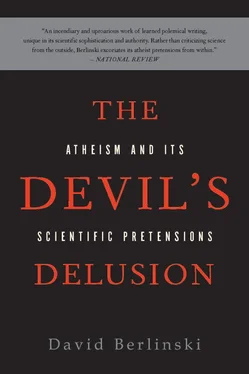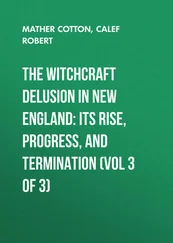The friction thus engendered, Galileo proposed to ameliorate by means of a semantic dodge. “Although the scriptures cannot err,” he wrote, “nevertheless some of its interpreters and expositors can err in various ways.” Such errors typically involve the confusion of metaphorical and literal meaning. Taken literally, scriptures would seem to assign to God “feet, hands and eyes,” and this, Galileo assumes, is quite absurd, although he makes this assumption by means of no argument. Moslem theologians of the tenth century had, after all, argued the contrary with great heat and no little eloquence.
There then follows a passage of quite extraordinary importance, one that has worked its way through every part of our own scientific and secular culture: “Thus given that the Scripture is not only capable but necessarily in need of interpretation different from the apparent meaning of [its] words, it seems to me that in disputes about natural phenomena, it should be reserved to the last place.” This opinion, although provocative in the context of seventeenth-century thought, is today uncontroversial. The sentences that follow are otherwise: “For the Holy Scripture and Nature both equally derive from the divine Word, the former as the dictation of the Holy Spirit, the latter as the most obedient executrix of God’s commands.” Although inspired by the Holy Spirit, scriptures belong to the world of appearances, and appearances can be confused or misleading. With nature, things are completely different. “Nature is inexorable and immutable,” Galileo writes, “and she does not care at all whether her recondite reasons and modes of operation are revealed to human understanding, and so she never transgresses the terms of the laws imposed on her.” What Galileo calls “sensory experiences placed before our eyes or necessary demonstrations concerning nature” have an intrinsic force denied scripture itself, and in a conflict between the two, it is nature that must prevail.
This is revolutionary doctrine, and in Galileo’s mind, one revolution engenders another. “Philosophy is written in this grand book of the universe,” he affirms, his words again canonical, “which stands continually open to our gaze. But the book cannot be understood unless one first learns to comprehend the language and read the alphabet in which it is composed.”
From this remarkable declaration, it follows that Nature is a book; and from what Galileo has already written, it follows that “nature never transgresses the terms of the laws imposed upon her.”
These assertions imply that the Book of Nature is inerrant, so that the doctrine of biblical inerrancy, a staple of Christian thought, has not at all been discarded in Galileo’s mind, but transferred. A new, greater, grander book now occupies his attention, but even though new, greater, and grander, the Book of Nature— the Book—is nonetheless very much like the old book. It is inerrant.
The “book of God’s word” and the “book of God’s works,” Francis Bacon argued, are not in conflict.
How could they be?
They are the same book.
Hearing that unorthodox opinions were afoot, a Dominican, Niccolò Lorini, expressed his scruples in a letter written on February 7, 1615, to Cardinal Paolo, prefect of the Holy Office in Rome. Galileo’s letter, he declared, was “suspicious or presumptuous.” In order “to show their cleverness,” Galileo and his followers were “airing and scattering broadcast [i.e., making known] in our steadfastly Catholic city, a thousand saucy and irreverent surmises.” Lorini had earlier admitted to Galileo that he knew nothing of mathematics or physics, and in words that even today compel admiration, admitted that he knew even less about this “Ipernic or whatever his name is.” He was, of course, referring to Copernicus.
And then a Carmelite named Paul Anthony Foscarini thought to compose a letter of his own, entitled “Copernicus and the Motions of the Earth and the Immobility of the Sun.” It was, in fact, less a letter and more of a tract, a vigorous defense of the new astronomy. If mathematical physics and Holy Scripture were in conflict on certain matters, Foscarini suggested, then so much the worse for Holy Scriptures. And they were plainly in conflict.
Exultavit ut gigas currendam viam, the Psalmist had written about the sun.
“He rejoiceth like a giant to run the way.”
Foscarini had persuaded himself that his enthusiasm was infectious without ever once worrying that it might be contagious. He sent a copy of his letter to Robert Cardinal Bellarmine.

An engraving of Cardinal Bellarmine by the Flemish artist Valdor of Liege depicts a man of about fifty. The cardinal is wearing a red hat, the sign of his office, and his shoulders are sheathed in red clerical robes. His face suggests a man one would be glad to know but unwilling to cross—careful eyes, an aquiline nose, and round, rubicund cheeks descending smoothly into a smooth, trimmed Vandyke beard. The forehead is creased and the edges of his eyes are crinkled, but not in any way indicating amusement. The man is plainly a prince of the Church, familiar with power and accustomed to human vanity. When Church officials commented on his outstanding piety and almost supernatural goodness—he was said to be fond of the poor—they did so in order to justify denying him the papacy. He is today a saint, circumstances suggesting that at his trial, the Devil’s Advocate was indisposed.
Receiving Foscarini’s letter in 1615, Bellarmine sent a response that arrived on April 12.
“My very dear Reverend Father,” Bellarmine begins suavely, and afterward I paraphrase. It has been a pleasure for me to read your letter. It exhibits such skill and learning.
Bellarmine’s praise was not insincere. He had, various stories indicated, once looked through a telescope pointed inconclusively toward Saturn, and he had seen enough so that with ringed traces of the eyepiece raccooning his eyes, he had muttered something indicating his pleased astonishment.
Nevertheless, the tone of Bellarmine’s letter now changes. He will be brief, he informs this provincial rustic. No doubt Foscarini has little time to read, but more to the point, he has little time to write.
The Copernican assumption, the cardinal affirms, that it is the sun that stands still and the earth that moves might well “save appearances,” and so conform to the facts better than the ancient Ptolemaic theory, with its wearisome eccentrics and epicycles. Let us say that this is so. “There is in this,” the cardinal allows, “nothing dangerous.”
But to go further into the frank affirmation that the sun really is immovable and the earth really is in motion—this, Bellarmine declares, “ is a very dangerous thing.”
Sixteen years before, Bellarmine had served the Church as an inquisitor at the trial of Giordano Bruno, one of history’s lamentable pests, and Bruno had been burned at the stake, Cardinal Bellarmine approving the verdict and having done nothing to prevent its execution. When written by a man prepared to put other men to death, the words very dangerous have a force they might not otherwise possess. The cardinal, one imagines, has caught Foscarini’s attention.
“Whenever a true demonstration would be produced that the sun stands at the center of the world”—and none has been vouchsafed me, the cardinal is quick to affirm—“then at that time it would be necessary to proceed with great caution in interpreting Scriptures which seem to be contrary.”
Читать дальше













